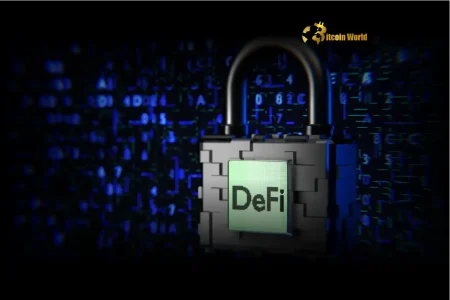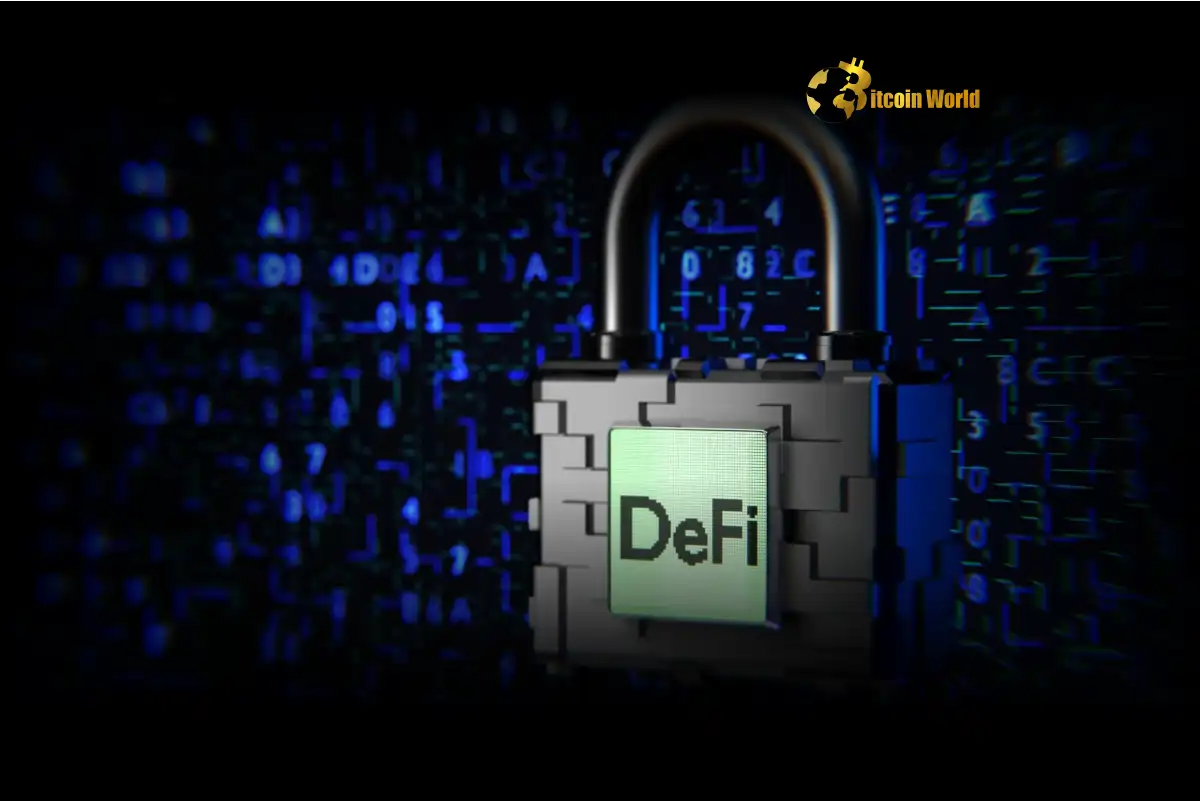DeFi: Unlocking Astonishing Potential in Traditional and Crypto Finance


BitcoinWorld

DeFi: Unlocking Astonishing Potential in Traditional and Crypto Finance
Welcome to the exciting world where finance meets cutting-edge technology! Today, we’re diving deep into Decentralized Finance, or DeFi, a movement that’s not just changing how we think about money but is also poised to have a significant impact on traditional finance and reshape the landscape of crypto finance.
What Exactly is Decentralized Finance (DeFi)?
At its core, Decentralized finance is an umbrella term for financial applications built on blockchain technology, most notably Ethereum. Unlike traditional financial systems that rely on intermediaries like banks, brokers, and exchanges, DeFi aims to remove these gatekeepers, offering peer-to-peer transactions and services directly on the blockchain.
Think of it as finance without borders, available to anyone with an internet connection. It’s about creating an open, transparent, and permissionless ecosystem for financial services. This includes everything from lending and borrowing to trading, insurance, and asset management.
Exploring the Vast DeFi Potential
The DeFi potential is immense because it offers solutions to many pain points in the existing financial system. By leveraging smart contracts – self-executing contracts with the terms of the agreement directly written into code – DeFi applications can automate processes, reduce costs, and increase speed.
Here are some key areas where DeFi shows incredible promise:
Accessibility: Millions of people globally are unbanked or underbanked. DeFi can provide them access to financial services without needing a traditional bank account.
Transparency: Transactions and protocols operate on public blockchains, allowing anyone to audit the activity.
Efficiency: Automation via smart contracts removes manual processes and reduces transaction times.
Innovation: The open nature of DeFi allows for rapid experimentation and the creation of novel financial products and services that weren’t possible before.
This isn’t just theoretical; we’re already seeing decentralized exchanges (DEXs) facilitating token swaps, lending protocols allowing users to earn interest or borrow assets, and yield farming strategies generating passive income.
How is DeFi Challenging Traditional Finance?
The rise of DeFi is creating a fascinating dynamic with Traditional finance. While not yet a direct replacement, DeFi is acting as a powerful disruptor and a source of inspiration for innovation within the legacy system. Here’s how:
Competition in Services: DeFi protocols offer competitive rates for lending and borrowing, often better than traditional banks. DEXs challenge centralized exchanges and brokers.
Disintermediation: By removing middlemen, DeFi reduces costs and complexity, pushing traditional institutions to rethink their value proposition.
Tokenization of Assets: DeFi is pioneering the tokenization of real-world assets, making them more liquid and accessible for trading and investment, a concept traditional finance is now exploring.
Faster Settlement: Blockchain-based settlements can be significantly faster than traditional systems, which can take days.
Major financial institutions are watching DeFi closely, with some even exploring blockchain technology for their own operations, recognizing the efficiency and transparency benefits. The pressure is on for traditional finance to adapt and integrate aspects of this new paradigm.
Navigating the World of Crypto Finance with DeFi
For those already involved in Crypto finance, DeFi represents the next frontier. It moves beyond simple buying and selling of cryptocurrencies to using them as building blocks for complex financial activities. DeFi allows crypto holders to:
Earn passive income by staking or lending their assets.
Borrow stablecoins or other cryptocurrencies against their existing holdings without selling them.
Trade assets directly from their wallet without needing a centralized exchange account.
Participate in decentralized insurance pools or prediction markets.
Access new investment opportunities like yield farming and liquidity providing.
DeFi is essentially unlocking the full financial utility of cryptocurrencies, transforming them from speculative assets into productive capital within a new financial ecosystem.
However, it’s crucial to understand that while the opportunities are vast, navigating DeFi requires technical understanding and awareness of the risks involved, such as smart contract bugs, impermanent loss in liquidity pools, and regulatory uncertainty.
What Challenges Does DeFi Need to Overcome?
Despite its promise, DeFi is still in its early stages and faces significant hurdles:
Regulation: Governments worldwide are grappling with how to regulate decentralized protocols and assets, creating uncertainty.
Security Risks: Smart contract vulnerabilities and protocol exploits can lead to significant financial losses for users. Auditing is crucial but not foolproof.
Scalability: Some underlying blockchains struggle with high transaction volumes, leading to slow speeds and high fees (though Layer 2 solutions are addressing this).
User Experience: DeFi interfaces can be complex and intimidating for newcomers compared to user-friendly traditional banking apps.
Interoperability: Connecting different blockchains and traditional systems remains a challenge.
Addressing these challenges is vital for DeFi to achieve mainstream adoption and fully realize its potential impact.
Actionable Insights for Getting Involved
Interested in exploring the world of DeFi? Here are a few steps you can take:
Educate Yourself: Start by learning the basics of blockchain, cryptocurrencies, and how smart contracts work. Understand the specific protocols you’re interested in.
Start Small: Don’t invest more than you can afford to lose. Begin with smaller amounts to get comfortable with the platforms and processes.
Understand the Risks: Be aware of potential hacks, scams, and market volatility. Not all DeFi projects are legitimate or secure.
Use Reputable Protocols: Stick to well-established and audited protocols initially.
Secure Your Wallet: Your private keys are your access to your funds. Use hardware wallets for significant amounts.
Remember, the DeFi space is dynamic and moves quickly. Staying informed is key.
The Road Ahead for DeFi and Traditional Finance
The relationship between DeFi and traditional finance is likely to evolve from competition to potential collaboration or integration. We may see traditional institutions adopting blockchain technology, partnering with DeFi protocols, or creating hybrid models that combine the strengths of both worlds.
The DeFi potential to reshape global finance is undeniable. While the journey is fraught with challenges and requires careful navigation, the innovation bubbling within this space is set to redefine accessibility, efficiency, and opportunity in the financial sector for years to come, impacting both traditional finance and the future of crypto finance.
In conclusion, DeFi is far more than just a buzzword; it’s a revolutionary approach to finance that leverages blockchain to create open, accessible, and efficient systems. Its potential to disrupt traditional finance and unlock new possibilities within crypto finance is immense, though it requires careful understanding and risk management from participants. As the technology matures and regulatory clarity emerges, DeFi is set to play an increasingly significant role in the global economy.
To learn more about the latest explore our article on key developments shaping crypto finance institutional adoption.
This post DeFi: Unlocking Astonishing Potential in Traditional and Crypto Finance first appeared on BitcoinWorld and is written by Editorial Team







